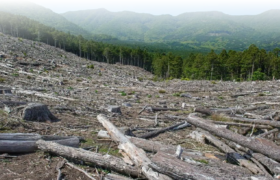Crisis Unfolding: The Decline in Student Enrollments Grips Khyber Pakhtunkhwa’s Premier University
In a disconcerting development, the University of Peshawar, the largest academic institution in Khyber Pakhtunkhwa (KP), finds itself in the throes of a significant decline in student enrollments for its Bachelor of Science (BS) programs. This unsettling trend not only raises questions about the financial health of the university but also sheds light on broader challenges facing higher education in the region.
According to recent reports, the University of Peshawar, with a capacity to admit 6,000 students annually across its 53 departments, has experienced a staggering 50% drop in admissions this year. The enrollment figures for BS programs have dwindled to just over 2,800 students, a stark contrast to the numbers from the preceding academic year.
The repercussions of this decline extend beyond mere statistics. A closer examination reveals that 10 out of the 53 departments have not admitted a single student. Disciplines such as Pashto, Persian, Philosophy, Gender Studies, History, and Social Work find themselves grappling with the prospect of empty classrooms. The financial fallout is projected to be substantial, with an estimated annual loss of 18 crore rupees, exacerbating the university’s existing financial challenges.
Education experts identify a confluence of factors contributing to this concerning downturn. Chief among them is a notable increase in fees, rising by several percentage points. The fee per semester for BS programs has surged from 52 thousand to 72 thousand rupees, potentially acting as a deterrent for aspiring students, especially in a region where financial constraints are prevalent.
A crucial observation is the emergence of BS programs in most provincial colleges, offering a fixed fee of 4,500 rupees per semester. This affordability factor in regional colleges could be drawing students away from the university, opting for more economical educational alternatives.
The situation at the University of Peshawar is not an isolated incident but reflective of challenges faced by other universities in Khyber Pakhtunkhwa. The landscape of higher education in the province is evolving, with new institutions vying for student attention. This shift presents both opportunities and threats, as established universities must adapt to remain attractive and relevant.
As the premier educational institution grapples with these challenges, it becomes imperative to assess the broader implications for higher education in Khyber Pakhtunkhwa. The declining enrollments not only pose a threat to the academic vibrancy of individual universities but also raise concerns about the overall quality and accessibility of higher education in the region.
The stakes are high, and the response to this crisis will shape the future trajectory of universities in Khyber Pakhtunkhwa. It necessitates a strategic reevaluation of fee structures, a focus on enhancing the competitive edge of established institutions, and a proactive approach to address the evolving needs and preferences of students in a rapidly changing educational landscape.
The resilience and adaptability of universities in KP will play a pivotal role in determining their future relevance and sustainability. While the current scenario presents formidable challenges, it also offers an opportunity for higher education institutions to introspect, innovate, and emerge stronger to meet the educational needs of the diverse and dynamic student population in Khyber Pakhtunkhwa. As these universities navigate the evolving landscape, their ability to innovate and adapt will be crucial in ensuring the continued vibrancy and relevance of higher education in the region.
To comprehend the depth of the issue, it is essential to explore the challenges faced by other universities in Khyber Pakhtunkhwa. The University of Peshawar’s predicament is not an isolated occurrence but a symptom of a broader ailment afflicting the higher education sector in the province.
Reports indicate that several universities in KP are witnessing a notable decrease in student admissions, presenting a collective challenge to the region’s higher education landscape. A key contributing factor to this decline is the surge in tuition fees across various institutions. The financial strain imposed on students, combined with economic uncertainties in the region, is discouraging prospective applicants from pursuing higher education.
Moreover, the proliferation of universities in different districts of KP has reshaped the higher education landscape. The allure of proximity and accessibility offered by these newer institutions has resulted in a redistribution of student preferences. Established universities are grappling with heightened competition, compelling them to reassess their strategies to attract and retain students.
Furthermore, the introduction of BS programs in provincial colleges, featuring significantly lower tuition fees, has emerged as a formidable competitor to traditional universities. The fixed fee of 4,500 rupees per semester in these colleges has made education more accessible for many students, diverting them from the more expensive university options.
Departments in various universities are feeling the impact of this enrollment crisis. Disciplines such as Pashto, Persian, Philosophy, Gender Studies, History, and Social Work, which have historically been integral components of a well-rounded education, are particularly vulnerable. Several departments are reporting a complete absence of new admissions, posing a threat to the continuity and vitality of these academic fields.
The financial implications of declining enrollments are not confined to individual universities but extend to the overall health of the higher education sector in KP. The annual loss of millions of rupees for each affected institution exacerbates financial deficits, limiting their capacity to provide quality education and invest in essential infrastructure and faculty development.
As the educational landscape in KP undergoes a transformation, it becomes imperative for universities to adapt and innovate. Strategic measures such as revisiting fee structures, enhancing the relevance of academic programs, and investing in marketing and outreach efforts are crucial for these institutions to navigate the challenges posed by the evolving preferences of students.
The resilience and adaptability of universities in KP will play a pivotal role in determining their future relevance and sustainability. While the current scenario presents formidable challenges, it also offers an opportunity for higher education institutions to introspect, innovate, and emerge stronger to meet the educational needs of the diverse and dynamic student population in Khyber Pakhtunkhwa. As these universities navigate the evolving landscape, their ability to innovate and adapt will be crucial in ensuring the continued vibrancy and relevance of higher education in the region.





